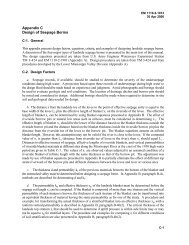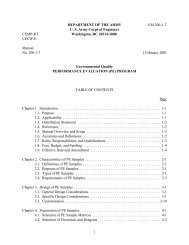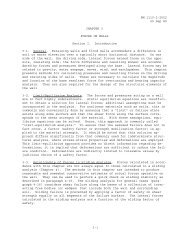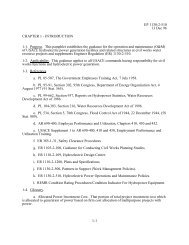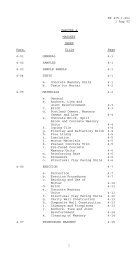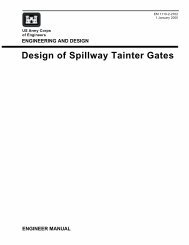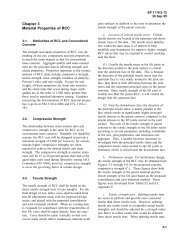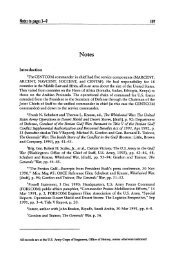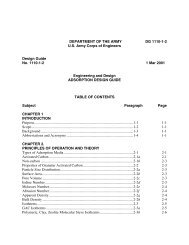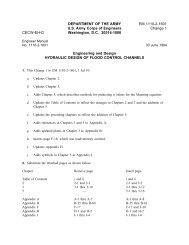Chapter 5 - Publications, US Army Corps of Engineers
Chapter 5 - Publications, US Army Corps of Engineers
Chapter 5 - Publications, US Army Corps of Engineers
You also want an ePaper? Increase the reach of your titles
YUMPU automatically turns print PDFs into web optimized ePapers that Google loves.
EM 1110-2-1701<br />
31 Dec 1985<br />
elevation by means <strong>of</strong> a hydraulic turbine connected to a generator.<br />
Electrical energy is usually measured in kilowatt-hours, but it can<br />
also be defined in terms <strong>of</strong> average kilowatts. Three classes <strong>of</strong><br />
energy are <strong>of</strong> interest in hydropwer studies: average annual, firm,<br />
and secondary.<br />
b= ~ A hydro projectts average annual<br />
energy is an estimate <strong>of</strong> the average amount <strong>of</strong> energy that could be<br />
generated by that project in a year, based on examination <strong>of</strong> a long<br />
period <strong>of</strong> historical streamflows. In sequential streamflow analysis,<br />
average annual energy is calculated by taking the mean <strong>of</strong> the annual<br />
generation values over the period <strong>of</strong> record. In non-sequential<br />
analysis, it is computed by measuring the area under.the annual powerduration<br />
curve. In many power studies, energy benefits are based<br />
directly on average annual energy. In other cases, it is necessary to<br />
evaluate firm and secondary energy separately (see Section 9-100).<br />
(1) AS defined from the marketing standpoint, firm energy is<br />
electrical energy that is available on an assured basis to meet a<br />
specified increment <strong>of</strong> load. For hydroelectric energy to be marketable<br />
as firm energy, the streamflow used to generate it must also be<br />
available on an assured basis. Thus, hydroelectric firm energy (also<br />
sometimes called primary energy) is usually based on a projectrs<br />
energy output over the most adverse sequence <strong>of</strong> flows in the existing<br />
streamflow record. This adverse sequence <strong>of</strong> flows is called the<br />
critical period (see Section 5-10d).<br />
(2) Where a hydro plant or hydro system carries a large portion<br />
<strong>of</strong> a power system~s load, the hydro plantts firm energy output must<br />
closely follow the seasonal demand pattern. Reservoir storage is<br />
<strong>of</strong>ten required to shape the energy output to fit the seasonal demand<br />
pattern. Where hydro comprises only a small part <strong>of</strong> a power systemts<br />
resource base, a hydro plantts output does not necessarily have to<br />
match the seasonal demand pattern. Its firm output can frequently be<br />
utilized in combination with other generating plants and in this way<br />
will serve to increase the total system firm energy capability.<br />
However, in some systems, marketing constraints may preclude taking<br />
advantage <strong>of</strong> this flexibility.<br />
(3) In the Pacific Northwest and parts <strong>of</strong> Alaska, where hydropower<br />
is the predominant source <strong>of</strong> generation, generation planning is<br />
based primarily on system energy requirements rather than peak load<br />
requirements (see Sections 2-2b and S-sb). Thus, to determine a<br />
proposed hydro projectts value to the system, it is necessary to<br />
compute that projectfs firm energy capability. Capacity consid-<br />
5-2




